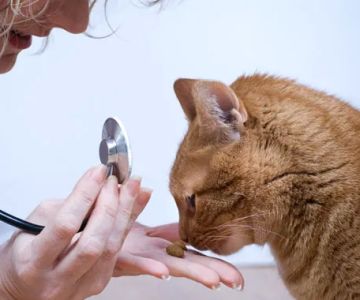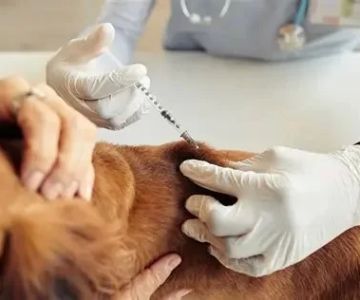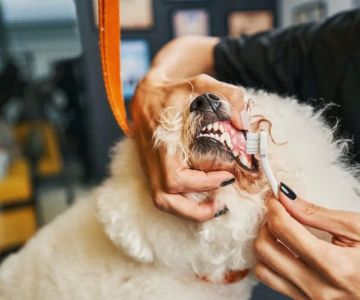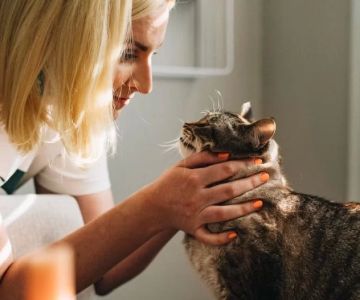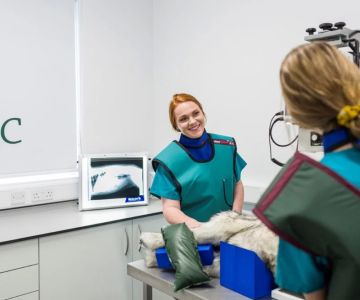Cost Basics: What It Really Costs to Become a Veterinarian
Answering the big question: how much money does it take to become a veterinarian?
Short version: expect a lifetime spend that often lands between $220,000 and $420,000+ from the first day of pre-vet through your DVM—depending on your school choices, location, and living style. That range wraps in tuition, mandatory fees, books, equipment, exam costs, and living expenses. If you’re targeting low-cost, in-state programs and keeping housing modest, you may finish closer to the lower end. Private or out-of-state programs plus a major-metro cost of living will pull you higher.
Where the money goes (and why this varies so much)
1) Pre-vet (usually 4 years)
In-state public universities can run $12,000–$30,000 a year in tuition and fees; out-of-state or private can jump to $35,000–$60,000+. Add $12,000–$25,000 a year for housing, food, and transport depending on city size.
2) Veterinary school (4 years)
In-state DVM tuition/fees often range $25,000–$55,000 per year; out-of-state/private frequently land in the $50,000–$75,000+ band. Clinical years may bring extra costs (travel to rotations, exam fees, and professional attire).
3) Exams, applications, and professional items
Factor in $3,000–$8,000+ total for application cycles, Casper/Altus fees (when required), GRE (where still accepted), the NAVLE, white coats, stethoscopes, scrubs, liability insurance, and membership dues.
Throughout this guide, we’ll circle back to the primary keyword—how much money does it take to become a veterinarian—and translate that question into practical budget choices you can act on today.
Tuition and Fees: Public vs. Private and State Differences
Three tuition realities you must accept
Reality #1: In-state is almost always cheaper
Many public vet schools price in-state DVM tuition tens of thousands lower per year than out-of-state. Some programs allow residency reclassification after year one—others don’t. That single policy can swing your four-year total by $40,000–$100,000+.
Reality #2: Fees quietly add up
Technology fees, lab fees, course materials, and health insurance are often non-negotiable. Budget an extra $2,000–$6,000 per year beyond sticker tuition.
Reality #3: Private ≠ impossible, but planning must be sharper
Private programs may offer larger merit packages but still trend higher net costs. To make private work, combine scholarships, aggressive budgeting, and a focused plan for internships/residencies that boost long-term earning power.
Two Real-World Paths, Side by Side (Case Studies)
Case 1: Maya—The in-state optimizer
Profile
Maya completes pre-vet at an in-state public university, lives with roommates, and gets a small merit scholarship.
Estimated totals
Pre-vet (4 yrs): $18,000 tuition/fees + $14,000 living = $32,000/yr → $128,000
DVM (4 yrs): $36,000 tuition/fees + $18,000 living = $54,000/yr → $216,000
Exams/gear/travel total: ~$6,000
Grand total: ≈ $350,000
How she keeps it sane
Maya works 8–10 hrs/week in a campus clinic, secures a $5,000 annual scholarship during the DVM, and keeps car costs low. She graduates with debt around $210,000–$240,000.
php-template复制编辑Case 2: Chris—Private program in a major metro
Profile
Chris attends a private college for pre-vet and a private DVM program in a high-rent city.
Estimated totals
Pre-vet (4 yrs): $45,000 tuition/fees + $22,000 living = $67,000/yr → $268,000
DVM (4 yrs): $62,000 tuition/fees + $26,000 living = $88,000/yr → $352,000
Exams/gear/travel total: ~$8,000
Grand total: ≈ $628,000
Why it can still work
Chris lines up institutional grants, applies for targeted veterinary scholarships every semester, and commits to a high-need rural mixed-animal role for loan-repayment eligibility. Debt at graduation pencils to $350,000–$420,000 but is paired with repayment benefits and a plan to upskill into practice ownership.
Will the Math Work Out? Salaries, ROI, and Break-Even
Early-career earnings snapshot (typical ranges in 2025)
New small-animal associates commonly see offers around $90,000–$130,000 depending on region, production bonus structure, and schedule. Emergency/critical care and specialty tracks can pay more; rural mixed-animal roles may layer on loan-repayment incentives.
How to estimate your break-even point
Rule of thumb
If your projected total debt is near or below your first-year gross salary × 2, your monthly payments are more manageable on a standard or hybrid plan. Above that, income-driven repayment plus forgiveness or loan-repayment programs become key.
Example quick math
Debt $240,000 at 6.0% with a 10-year standard plan runs roughly $2,660/month. On a $110,000 salary, a 28% debt-to-income allocation would be ~$2,567/month—tight, but workable with roommates and a used car. This is why choosing in-state tuition can materially change the answer to how much money does it take to become a veterinarian—because it reshapes your monthly reality.
How to Pay for It: Smart Financing and Scholarship Plays
Grants and scholarships you should not ignore
University-level awards
Most programs have merit and need-based awards that renew yearly if GPA thresholds are met. Put recurring reminders on your calendar; unclaimed awards are more common than you think.
Professional associations and corporate sponsors
Veterinary foundations and animal-health companies fund scholarships for diversity, rural service, dairy, swine, equine, and wildlife interests. Apply every term—even small $1,000–$2,500 awards stack.
Federal and state levers
FAFSA and aid
File early each cycle. Consider work-study for clinic or research roles that double as experience builders.
Loan-repayment and service programs
Look for rural or public-health placements that exchange multi-year service for tens of thousands in loan payoff. Some states top this with their own incentives.
Private loans (use sparingly and shrewdly)
If you shop private loans, compare APRs, forbearance options, co-signer release, and autopay discounts. Align variable-rate exposure with your risk tolerance and graduation timeline.
Everyday cash-flow tactics
House/transport
Roommates, transit passes, and campus-adjacent housing are the trio that bend your curve down by thousands each year.
Textbooks and gear
Use older editions when the curriculum allows. Buy-sell groups inside each cohort are a goldmine.
Timeline and Checklist From Pre-Vet to DVM
Years 1–2 (pre-vet)
Lock prerequisites, build animal and veterinary hours, and shadow across small-animal, large-animal, and shelter medicine. Start a simple “Cost Notebook” to track what you actually spend.
Year 3 (pre-vet)
Prep personal statement and letters, draft a school list weighted by in-state value, program fit, and total projected cost (not just tuition).
Year 4 (pre-vet)
Apply strategically, budget for interviews, and create a side-by-side cost spreadsheet for every acceptance.
DVM Years 1–2
Keep living costs lean, secure on-campus roles, and apply for targeted scholarships each semester.
DVM Years 3–4
Plan rotation travel early, lock housing shares, and schedule the NAVLE with a dedicated study calendar to avoid retake fees.
Mistakes to Avoid If You Want Lower Debt
1) Chasing prestige over fit and cost
Across eight years, the premium adds up fast. Admissions fit and clinical opportunities matter—but run the numbers.
2) Ignoring fee fine print
Health insurance waivers, lab fees, and technology charges are policy-driven details that can save or cost you thousands.
3) Taking the first loan offer you see
APR, deferment, and borrower protections differ widely. A one-point APR gap on six figures is real money.
Ready to Take Control? Get the Vet School Cost Planner
Why this tool matters
When people ask, “how much money does it take to become a veterinarian?” the honest answer is, “It depends—on your choices.” Our printable and digital Vet School Cost Planner & Scholarship Tracker walks you step-by-step through pre-vet and DVM budgets, compares in-state vs. out-of-state offers, and auto-totals tuition, fees, living, rotations, and exam costs so you can see your four-year and eight-year outlook in seconds.
What you get
A structured budget template, scholarship calendar, loan comparison sheet, repayment scenario calculator, and a quick-start guide with sample budgets (including the Maya and Chris paths above). It’s built to help you reduce debt by five figures—and to give you the confidence to say yes to the right offer.
Your next step
If you’re serious about becoming a DVM, lock in your numbers now. Start with the Vet School Cost Planner & Scholarship Tracker and build the plan that fits your life and goals.



